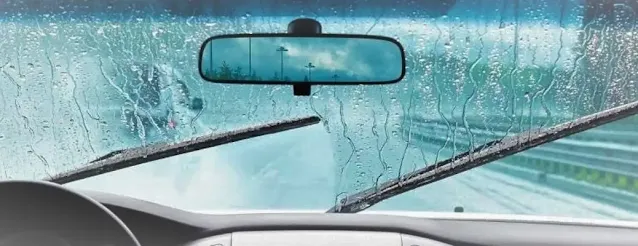Estimated Reading Time: 5 minutes
How to Protect Your Car from Winter Damage: Essential Tips
Winter can be harsh on your car, subjecting it to a variety of elements that can lead to long-term damage. Cold temperatures, snow, ice, salt, and other environmental factors can affect both the exterior and the interior of your vehicle. If you want to keep your car running smoothly throughout the winter months, it’s crucial to take some preventive measures. In this article, we’ll cover essential tips for protecting your car from winter damage, helping you maintain its performance and appearance during the cold season.
Why Winter is Tough on Your Car
Winter brings several challenges for your vehicle. Low temperatures can cause engine fluids to thicken, making it harder for your engine to start. Snow and ice buildup can damage your car’s paint, while road salt can lead to rust if not cleaned off properly. In addition, freezing temperatures can put extra strain on your tires, battery, and windshield. By understanding these challenges, you can take the necessary steps to minimize winter damage.
1. Get a Winter-Ready Battery
A weak or old battery is one of the most common reasons for car trouble in winter. Cold temperatures can reduce your battery’s efficiency, making it harder to start your car. To avoid being stuck with a dead battery, make sure to have your battery checked before winter sets in.
Key Tips:
- Test your battery: Have it tested at an auto shop to ensure it’s in good condition.
- Clean terminals: Dirt and corrosion on battery terminals can cause poor connections, so clean them regularly.
- Replace if necessary: If your battery is over three years old, consider replacing it to avoid unexpected breakdowns.
2. Change to Winter Tires
Driving in winter conditions with all-season tires is risky. Winter tires, also known as snow tires, are specifically designed to provide better traction on snow, ice, and slippery roads. These tires have deeper treads and are made of rubber compounds that stay flexible in cold temperatures, improving your vehicle’s grip.
Why Winter Tires are Important:
- Improved traction: Winter tires provide better traction in snowy or icy conditions, reducing the risk of slipping.
- Safer braking: They help your car stop more effectively, which is crucial in cold, wet, or icy conditions.
3. Regularly Wash and Wax Your Car
Salt and grime from the road can quickly accumulate on your car’s undercarriage and body during winter. Road salt is effective at melting snow, but it can also cause corrosion if not cleaned off regularly. A good wash helps prevent rust, while a layer of wax provides a protective barrier against harsh winter elements.
Key Tips:
- Wash frequently: Wash your car every two weeks to remove road salt and grime. Pay special attention to the undercarriage.
- Wax your car: Apply a high-quality wax at the start of the season to create a protective layer against dirt and water.
4. Maintain Your Windshield and Wipers
Winter often means dealing with snow, ice, and freezing rain, which can obstruct your view while driving. To protect your windshield and ensure optimal visibility, you need to maintain your wipers and use the right fluids.
Key Tips:
- Replace wiper blades: Change your wiper blades if they are worn or ineffective at clearing snow and ice.
- Use winter windshield washer fluid: Choose a washer fluid that is formulated for winter use, as it has antifreeze properties.
- Clear snow and ice regularly: Make it a habit to clear all snow and ice off your windshield, windows, and mirrors before driving.
5. Check Your Car’s Fluids
Cold temperatures can cause engine oil, transmission fluid, and antifreeze to thicken, making your engine work harder. To prevent this, ensure that your car’s fluids are at optimal levels and that the right type of fluids are used for winter conditions.
Key Tips:
- Use the right oil: Choose oil with the right viscosity for cold temperatures. Consult your owner’s manual for the best type.
- Check antifreeze levels: Ensure your car has enough antifreeze to prevent freezing and protect the engine.
6. Protect the Exterior with a Car Cover
If you’re parking your car outside during winter, consider using a weather-resistant car cover. A cover helps protect your car from snow, ice, and the damaging effects of road salt. It also prevents the buildup of grime, which can be harder to remove once it’s settled.
Why Use a Car Cover:
- Protection from the elements: Keeps snow, ice, and debris from accumulating on your car.
- Prevents scratches: Helps reduce the risk of scratches from ice scrapers or other outdoor elements.
7. Keep Your Gas Tank Half Full
In cold weather, condensation can form inside an empty or low gas tank, which can lead to water entering the fuel system. This can cause your engine to sputter and even result in fuel system failure. Keeping your tank at least half full will help prevent this issue.
Additional Benefits:
- Prevent frozen fuel lines: A fuller tank reduces the risk of fuel lines freezing in extreme cold.
8. Drive Carefully and Avoid Overloading Your Car
During winter, the roads can become slick and icy, so it’s essential to drive cautiously. Excessive speed, hard braking, and sudden acceleration can increase the risk of an accident. Also, avoid overloading your car with unnecessary weight, as this can put additional strain on your tires and suspension.
Key Tips:
- Drive slower: Adjust your speed to the conditions. Even if the road seems clear, icy patches may be hidden.
- Avoid heavy loads: Keep your car’s weight within recommended limits to prevent excessive wear on parts.
9. Consider a Heated Garage
If possible, park your car in a heated garage during the winter months. This will help protect it from the extreme cold and reduce the likelihood of freezing or condensation issues. A garage also keeps your car free from snow buildup, reducing the need for constant scraping.
Additional Benefits:
- Battery protection: A warm garage helps maintain battery efficiency, preventing it from draining in the cold.
- Paint protection: Your car’s paint will be less likely to crack or chip in a controlled temperature.









